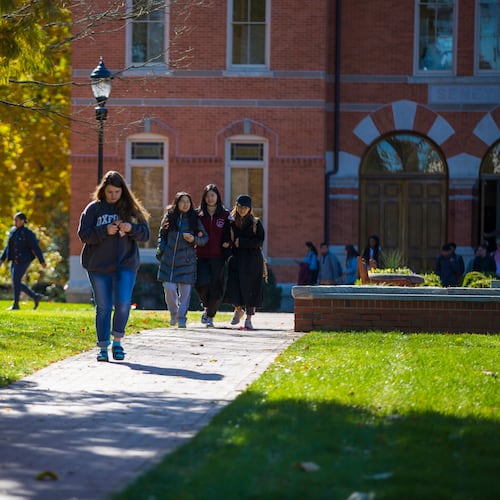A visit to Fulton County court this week was a reminder of all that was sordid about Atlanta Public Schools: teachers correcting wrong answers on tests to make students appear good on paper; unrelenting pressure from higher-ups using a “No Excuses” mantra to instill a culture of cheating; administrators stonewalling, prevaricating and threatening when asked to investigate what was happening.
And, of course, there were the students, the kids left behind, the ones cheated out of a shot at a future because their academic weaknesses were papered over. Gov. Sonny Perdue, who testified Monday about all this, once described it as a conveyor belt to prison:
“That is like cancer; it does not get better in and of itself when that student goes from the third grade, to the fourth grade, to the fifth grade, to the sixth grade. Those are the students you see lining up at Crim (High School) in the ninth grade and then, the next time we see them is in the Department of Juvenile Justice and in our corrections system.”
Crim sits on Memorial Drive and is the collection point for low-achieving students who don’t fit in elsewhere. Alonzo A. Crim, the first black school superintendent of a major Southern city, has the unfortunate “honor” of having his name become shorthand for all that is wrong with an urban school district.
But a mile east on Memorial Drive is another school, one that has become synonymous with hope and renewal: the Charles R. Drew Charter School, Atlanta's first charter school and a civic effort that is touted as a way to guide low-income minority kids to achievement. Charles Drew, a black man, was a surgeon whose pioneering work in blood storage helped save untold lives during World War II.
Thursday, the Washington-based Education Trust made Drew’s namesake one of three schools nationally to receive the 2014 “Dispelling the Myth Award,” which goes to schools helping to bring high achievement to minority or low-income students. The myth the award refers to is that those kinds of kids can’t perform as well as kids born with more advantages.
Drew Charter opened in 2000 after an urban revitalization project tore down East Lake Meadows and replaced the hellish housing projects with The Villages of East Lake, a mixed-income community nested next to the historic East Lake Golf Club. It was a then-radical idea shepherded by Atlanta development mogul Tom Cousins and seconded by not-yet-mayor Shirley Franklin.
When it opened, all but two of the school’s 240 kids were black and almost all came from poor families with sad back-stories.
The school overcame the inherent low expectations and, with community buy-in and the help of a lot of rich folks’ money, created what board chairwoman Cynthia Kuhlman calls “a cradle-to-college pipeline.” Its a place where students have access to many social-service bells and whistles not available in your typical public school.
Drew started out with elementary grades, grew to junior high and then, two years ago, despite some APS resistance (Superintendent Erroll Davis argued there was a glut of empty high school seats) went on to build a $55 million high school that resembles an ultra-modern airport terminal.
Currently, some 1,500 kids are enrolled, with the oldest in the 10th grade.
The school, which gives first chance at admission to kids from the adjoining Villages of East Lake and then to residents of the East Lake and Kirkwood communities, pushes STEAM — Science, Technology, Engineering, Arts and Mathematics — and slowly has coaxed, driven and inspired students to excel. The school has longer days, longer school years, uniforms, airy study spaces, computers, robots and classes where students break up into work groups to tackle projects.
“We’re past meeting standards; we’re starting to exceed standards,” Kuhlman said. Drew’s most recent scores on the infamous Criterion-Referenced Competency Tests (CRCT, the venue for the APS’s cheating) show that science was the only subject in which fewer than half the kids got “exceeds.” And 49 percent got “exceeds” in science. For most subjects, the number of kids scoring “does not meet” is in the low single digits.
Students like Simone Obleton, a 10th-grader, and Anna West, 7th, have embraced the less regimented style of learning, one that often puts students into groups and has them resolve problems. The idea behind it is that that’s what you’re called upon to do in real life, so why not start here?
Often, they must report back to their class with what they have learned, which is harder than memorizing an answer, because when you’re explaining it to your classmates “you have to know what you’re talking about,” said Anna. Truly a life lesson many adults haven’t mastered.
In recent years, the school has grown more “diverse” in that it’s drawing white kids from families in the surrounding, and increasingly gentrifying, neighborhoods. More than a quarter of the newest kindergarten class is white. That’s a good sign, because it’s a long-standing tradition that white folks won’t put their kids in a mostly black school unless it’s on an upswing.
The success of the school has bolstered charter school fans who argue, “Hey, looky here, this works. Let’s break down the horrible monolithic school system.”
But not all charter schools do well. And when they do, it may be partly because the participants are self-selected. The kids going to charter schools, even those coming from low-income families, have parents with enough wherewithal to bother to sign them up to something they see as special. If the parents go through that trouble, there’s a good chance they’ll help Johnny or Shauna do their homework, too.
Charter boosters talk about replicating the school’s model, but there is a limit. In fact, you’d need 33 more Drews to give all 50,300 APS students the same environment and resources. The problem is, there aren’t 33 Tom Cousinses or 33 historic golf clubs to go around.
Still, it’s a start.
About the Author
Keep Reading
The Latest
Featured


